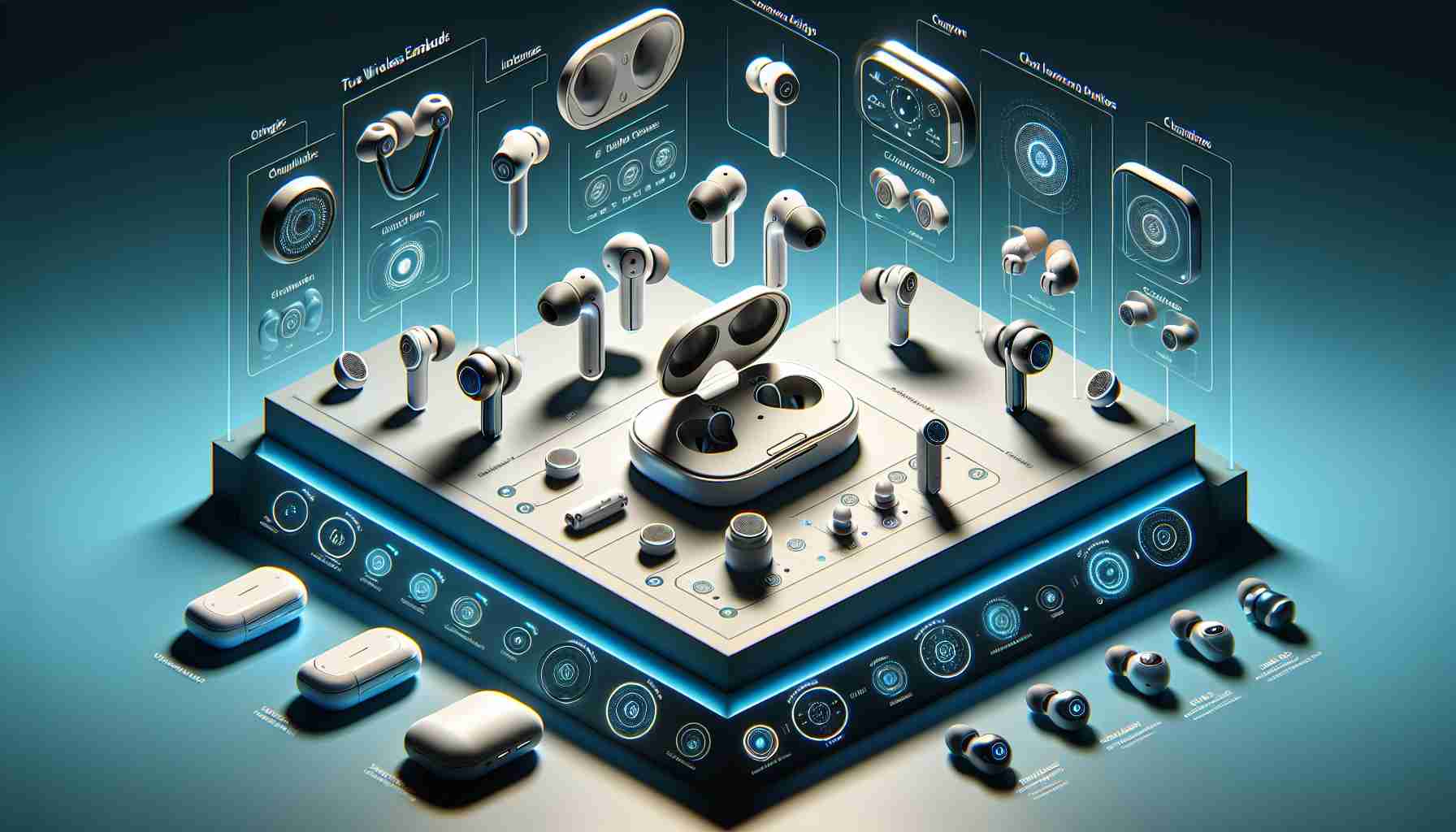In the competitive world of true wireless earbuds, Sony has introduced the LinkBuds, a notable alternative to Apple’s popular AirPods. While they may not offer the same advanced sound quality as Sony’s flagship noise-canceling model, the LinkBuds stand out for their discreet design and secure fit, making them suitable for users seeking comfort during calls and casual listening.
Another entry to consider is the EarFun Free Pro 3, which has been recognized as an improved version of its predecessor, catering specifically to fitness enthusiasts. These earbuds promise reliable performance during running sessions and are currently available at competitive pricing.
JBL has stepped up its game with the introduction of the Live Pro 2 and Live Free 2 earbuds. Both models enhance the user experience with impressive noise cancellation and sound quality. They also feature convenient aspects such as multipoint Bluetooth connectivity and an IPX5 rating for water resistance.
For audiophiles, the Shure Aonic 215 II offers a unique experience with a detachable Bluetooth module, pairing Shure’s renowned sound with a design that ensures a snug fit. These earbuds cater to those who prioritize sound quality and flexibility.
Sennheiser’s Sport True Wireless earbuds come equipped with a robust IP54 rating, providing protection against moisture and dust. Designed for active users, they include an ambient sound mode for safety during outdoor activities.
Finally, Sony’s Float Run presents an unconventional open-ear design, ideal for runners who prefer to stay aware of their surroundings while enjoying music. Each of these options reflects the evolving needs of consumers in the wireless audio market.
Exploring the Latest Innovations in True Wireless Earbuds
The market for true wireless earbuds (TWE) is continually evolving, with numerous innovations aimed at enhancing user experience and addressing common concerns. From improved battery life to advanced noise-cancellation technology, the latest models feature a variety of enhancements that promise to revolutionize how consumers enjoy audio on the go.
What Are the Latest Innovations in True Wireless Earbuds?
Recent trends show that manufacturers are investing heavily in features like adaptive sound control, which adjusts audio settings based on the user’s environment. Additionally, many new models are equipped with advanced voice assistant integration, allowing for easier access to digital services without the need to reach for your device. The introduction of spatial audio technology is also noteworthy, creating a surround sound experience that immerses users in their music or podcasts.
What Are the Key Challenges Facing True Wireless Earbud Technology?
Despite advancements, challenges remain in the true wireless earbud space. One major issue is battery life; as features increase, so does the demand on battery performance. Many users still seek longer playtime without the need for frequent charging. Manufacturers are also addressing concerns regarding connectivity issues, especially with the increasing number of devices that rely on Bluetooth 5.0 and beyond.
Moreover, the ongoing debate about sound quality versus convenience persists. While many users prioritize portability and comfort, audiophiles continue to argue that they are sacrificing sound fidelity for the sake of wireless design.
Are There Any Controversies Surrounding True Wireless Earbuds?
Another topic generating discussion is the potential health concerns associated with prolonged use of wireless earbuds. While the World Health Organization has generally deemed Bluetooth technology safe, some consumers worry about the long-term impacts of constant exposure. Additionally, ethical considerations surrounding e-waste and the environmental impact of disposable batteries are raising questions about sustainability in the tech industry.
Advantages and Disadvantages of True Wireless Earbuds
Advantages:
– **Convenience:** True wireless earbuds are compact and eliminate the hassle of wires, making them ideal for active users.
– **Comfort:** Many models are designed with ergonomics in mind, ensuring a secure and comfortable fit during extended wear.
– **Advanced Features:** Enhanced functionalities like touch controls, voice activation, and water resistance cater to a variety of user needs.
Disadvantages:
– **Battery Life Limitations:** Most true wireless earbuds cannot compete with wired options in terms of battery performance and longevity.
– **Sound Quality Concerns:** While technology is advancing, many earbuds still do not match the sound quality provided by traditional wired headphones, particularly at lower price points.
– **Potential Connectivity Issues:** Users may experience a dropout in connectivity, particularly in environments with heavy Bluetooth usage.
As the competitive landscape continues to shift, brands such as Apple, Sony, JBL, and others must innovate not only to attract users but also to address the challenges that come with the true wireless format. As consumer needs evolve, we can expect even more exciting features and improvements in the realm of true wireless audio.
The source of the article is from the blog oinegro.com.br
